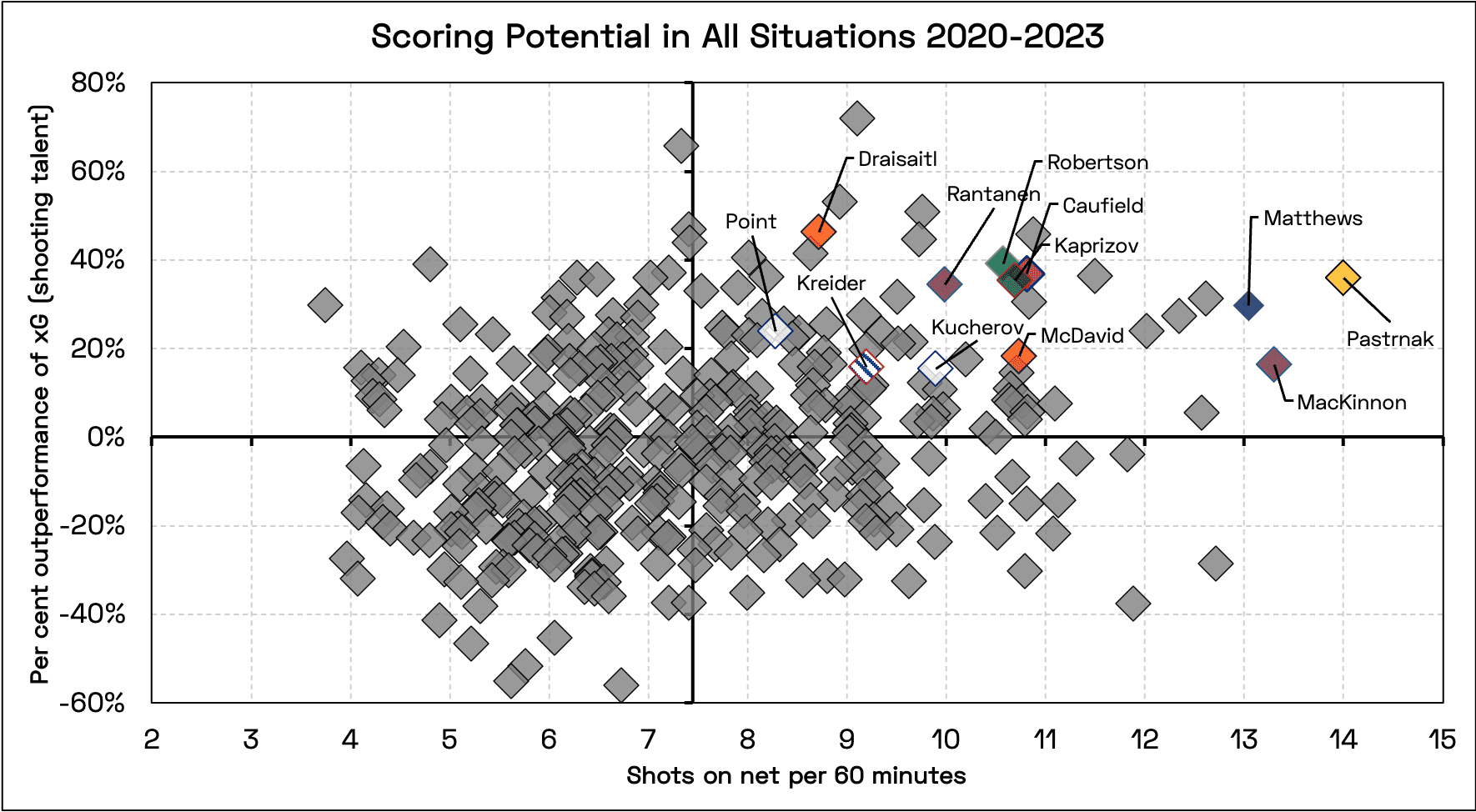Canadiens Analysis
Reasons Why Canadiens Fans Shouldn’t Worry About Caufield

There’s concern in the air when it comes to Montreal Canadiens forward Cole Caufield.
With just 19 goals in 66 games heading into Saturday’s matchup against the Calgary Flames, and now goalless for a month, it’s understandable that fans are a little frustrated with what’s going on with Caufield’s shooting this season.
Caufield’s 7.5 percent shooting percentage is less than half of what it was over the previous two seasons under head coach Martin St. Louis, where he scored on 17.7 percent of his shots on goal through 83 games, scoring 48 goals.
The shoulder surgery Caufield went through last season could have some effect on the fine-tuning of his shot, but frankly, after watching him in every game this season, this seems unlikely. It appears he’s simply snake-bitten.
Frankie Corrado took a look at Caufield’s shots recently for a segment on Habs on TSN, and he noted that Caufield is getting to the right areas, the puck is flying off his stick, he’s shooting for the right spots, but the goals just aren’t happening.
However, I don’t think anyone should see this as anything more than a blip in the path of Caufield’s career, and I’m going to break down why.
The Process is Improving
Even if we include the time when he was stuck playing with fourth-liners under Dominique Ducharme, the previous two seasons combined put Caufield among the best goal-scorers in the NHL at 5v5. He ranked 12th in goals per 60 minutes played (1.27 G/60) among the 578 players to hit 1000+ minutes played.
If we were to cut that time to right after St. Louis took over, only David Pastrnak and Auston Matthews scored more often than Caufield’s 1.61 goals per 60 at 5v5.
Even strength has been Caufield’s jam since entering the league, with the Habs’ powerplay being a mess until very recently. It should be encouraging that most of his scoring struggles have taken place during a game state in which he has been exceptional for the rest of his career.
Even in those 10 games in 2020-21 as a rookie, Caufield scored over 1 goal per 60, whereas this season he’s at a lowly 0.5 goals per 60, scoring on a measly 4.85 percent of his shots on goal, well below his career average.
Overall Caufield’s shooting percentage in 2023-24 was 2.1 percentage points below the league average of 9.6 percent in all situations, and it’s actually even more of an aberration when you consider that the league average shooting percentage for forwards is 11.8 percent.
However, we know that Caufield is an above-average finisher compared to his peers.
From 2020 to 2023, Caufield ranked 17th in the NHL among forwards in all situations, with 1.52 goals per 60, not to mention he was also 17th in shot attempts.
In addition, according to Evolving Hockey, he ranked 16th among forwards in how much he outperformed his expected goals, scoring 36.9 percent more than expected in almost 2100 minutes of all-situation hockey.
All these signs paint a picture of Caufield’s impressive goal-scoring prowess.
Contrasting the rate by which players outperform the expected finishing of a shot with the volume of shots they take, with the axes set at the average for each among forwards, and what we can see is that the top goal-scorers in the league are all in that upper right quadrant.
That’s not a surprise, but Caufield being right there in the thick of it shouldn’t surprise either.
The finishing hasn’t been there for Caufield this season, but the inputs overall are better than ever, with the highest individual expected goals per 60 minutes of his career, the highest shot rate, and the highest shot attempt rate.
His expected goals per shot on goal is the exact same as last season, at 10.7 expected goals per 100 shots.
There’s simply no metric that makes me worry about Caufield’s shot.
Don’t forget to check out the best odds for Canadian and US Sports Betting.
More Than Just A Montreal Canadiens Sniper
The evolution in Caufield’s game may have occurred without the dip in scoring, but watching him game in and game out, it’s clear that he’s found other ways to contribute that go beyond putting goals on the board himself.
There’s a lot of talk about Caufield’s playmaking ability improving significantly this season, and the most encouraging thing might be that the improvement is coming almost entirely from primary assists. His secondary assist rate is about the same as last season, but compared to the previous three seasons, his primary assist rate has doubled.
Cole Caufield finds Nick Suzuki with a perfect pass.
Good shot by Suzuki to beat Charlie Lindgren. 1-0 #GoHabsGo pic.twitter.com/llWa8TWcO4
— Marc Dumont (@MarcPDumont) February 7, 2024
Playmaking isn’t the only improvement either, he’s blocking more shots, more engaged physically, drawing more penalties, and contributing much more on the defensive side.
For example, take note of when the powerplay mishandles the puck and causes a rush against, it’s almost always Caufield backing up Mike Matheson with a hard backcheck.
The defensive results at even strength are also wildly improved, with his expected goals against rate 0.16 goals per hour lower than the team average despite taking on top matchups nightly, compared to last season where the team was giving up 0.66 more expected goals per hour with Caufield on the ice compared to when he was on the bench.
Going from a ‘defensive liability’ to ‘better-than-average’ is very strong development when it comes to this member of the Montreal Canadiens.
Good backcheck by Caufield on the shorthanded chance.
Then Monahan hits Caufield in the back of the leg. pic.twitter.com/Q9S9m4QlKT
— Marc Dumont (@MarcPDumont) December 17, 2023
So, don’t fret.
This is a season that should be viewed as a positive overall, even with the drop in goals. The underlying data points towards Caufield scoring with more frequency next season while erasing a bevy of weaknesses from his game.
And that’s something that should please all Montreal Canadiens fans.










